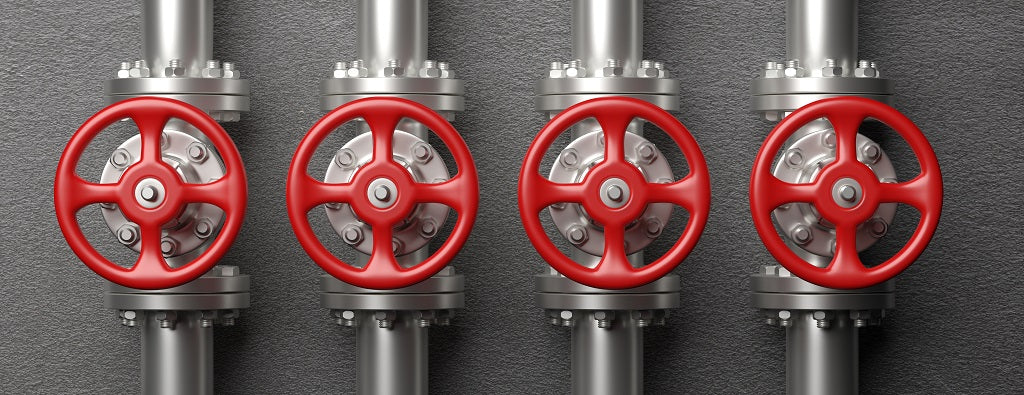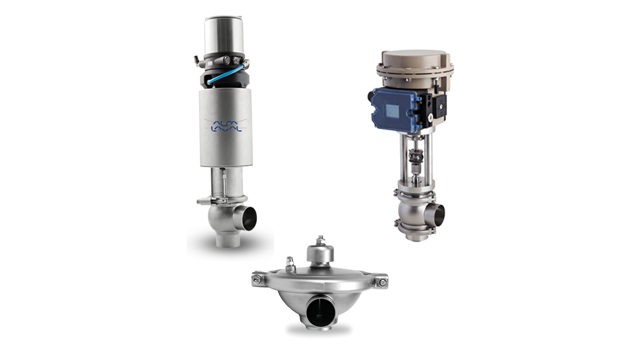Exploring the Performance of Modern Control Valves in Industrial Applications
Exploring the Performance of Modern Control Valves in Industrial Applications
Blog Article
Achieve Seamless Combination and Control With Top Quality Structure Automation Controls
In the realm of contemporary building monitoring, the value of quality building automation controls can not be overstated. Embracing high quality building automation controls is not simply an issue of benefit yet a critical essential for organizations aiming to maximize their facilities' efficiency and sustainability.

Advancement of Structure Automation Controls
Throughout the past couple of years, the development of developing automation controls has considerably transformed the means buildings are managed and run. At first, building automation systems mostly concentrated on basic features such as regulating air, heating, and air flow conditioning (HEATING AND COOLING) systems. As technology progressed, these controls have become a lot more advanced, allowing for a bigger variety of structure systems to be incorporated and taken care of centrally.
The development of building automation controls has seen a change in the direction of even more smart systems that can adapt to transforming conditions in real-time. This versatility is crucial for maximizing energy efficiency and making certain resident convenience. Additionally, modern building automation controls now provide features such as predictive upkeep, remote tracking, and information analytics, making it possible for facility managers to make data-driven decisions to boost structure performance.

Benefits of High Quality Integration
The improvement in building automation controls in the direction of even more smart systems has highlighted the considerable advantages of top quality integration in enhancing building operations and improving general efficiency. Quality assimilation of developing automation controls uses several crucial advantages. It leads to improved power performance by permitting different systems to work together seamlessly, ensuring optimal performance and reducing power wastefulness. High quality assimilation enhances resident comfort and performance by enabling individualized control over environmental setups like temperature level, illumination, and air quality. This customization can lead to an extra comfy and conducive working or living atmosphere. Additionally, top quality combination streamlines maintenance and repairing processes, as all systems are adjoined and can be kept an eye on and controlled from a central interface. This central control also supplies better presence and insights into structure efficiency, allowing aggressive maintenance and optimization techniques. On the whole, the advantages of high quality combination in structure automation controls are indisputable, offering increased efficiency, convenience, and operational effectiveness.
Boosted Customer Experience and Accessibility
Enhancing individual interaction with structure automation controls through intuitive style and improved availability boosts the total experience for occupants and facility supervisors alike. By concentrating on customer experience, building automation systems can end up being a lot more reliable and easy to use. User-friendly interfaces, clear navigation, and adjustable settings encourage customers to connect with the controls conveniently and properly.
Access attributes play an essential role in ensuring that all people, including those with impairments, can use the building automation regulates effortlessly. Incorporating features such as voice commands, responsive buttons, and color-contrasted display screens can improve availability and make the controls a lot more inclusive.
In addition, enhanced user experience leads to greater navigate here user satisfaction, boosted performance, and much better decision-making. Occupants can readjust environmental setups according to their preferences, while center managers can effectively take care of and check building systems - control valves. On the whole, prioritizing individual experience and ease of access in structure automation controls adds to a more productive and seamless structure environment for all stakeholders involved
Sustainable Practices Via Automation

Furthermore, automation can promote the assimilation of renewable energy resources such as solar panels or wind generators right into structure procedures. Via automation, buildings can line up with contemporary sustainability objectives and add to a greener future.
Future Trends in Structure Control Systems
One noticeable pattern forming the future of building control systems is the raised combination of Artificial Knowledge (AI) and maker learning. Furthermore, the Web of Things (IoT) is transforming building control systems by attaching gadgets and sensing units to enhance and improve operations performance.
Another crucial pattern is the focus on cybersecurity steps to protect against prospective threats to developing automation systems. As buildings come to be extra interconnected, making sure durable cybersecurity procedures will be vital to secure delicate information and avoid unapproved access.
Furthermore, the change in the direction of cloud-based platforms is getting energy, permitting for centralized control and remote accessibility to structure systems. This facilitates simpler tracking, upkeep, and updates, boosting the her comment is here overall performance and versatility of building control systems. As modern technology proceeds to advance, these trends are expected to shape the future landscape of structure automation controls, driving technology and sustainability in the constructed setting.
Conclusion
To conclude, building automation controls have actually advanced dramatically, using countless advantages such as boosted individual experience, availability, and lasting techniques. Quality assimilation plays a crucial function in achieving seamless control and efficient operation of structure systems. Future fads in building control systems are likely to concentrate on further boosting automation abilities for enhanced power effectiveness and general performance. It is essential for building owners and drivers to prioritize the adoption of high quality building automation controls to maximize building operations and accomplish long-lasting sustainability objectives.
In the realm of contemporary building monitoring, the value of high quality structure automation controls can not be overemphasized. In general, the advancement of building automation read the article regulates continues to drive innovation in the structure management market, offering new possibilities for producing smarter and more lasting buildings.
The development in structure automation manages in the direction of more intelligent systems has underscored the considerable advantages of quality combination in optimizing structure procedures and enhancing total performance. On the whole, prioritizing individual experience and accessibility in building automation controls contributes to a much more productive and smooth building atmosphere for all stakeholders included.
It is important for building proprietors and drivers to focus on the adoption of quality building automation manages to maximize structure operations and achieve long-term sustainability objectives. - control valves
Report this page